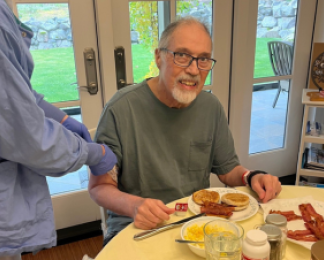Cardiovascular disease (CVD) is the number one cause of death on the planet. Smoking, diabetes, high blood pressure, obesity, and air pollution can increase your risk for CVD.
But did you know at least 80 per cent of premature deaths from heart disease and stroke can be avoided?
In B.C., we know that 1 in 3 people have a chronic disease, we rely too much on cars instead of our feet, many of us do not have access to healthy foods, and in tobacco use rates are higher in the Interior Health region than elsewhere in the province.
How you can reduce our control your risk of cardiovascular disease
Use your feet
Set a goal to walk for an hour a few times a week, or walk or cycle to work, or take the stairs instead of the elevator. Every step helps, and walking regularly is proven to reduce your risk of chronic disease.
Make healthy eating choices
Helping out our hearts doesn’t have to mean giving up your favourite foods. Think about adding fruits and vegetables, choosing whole grains more often, and being mindful of your fat choices (choosing unsaturated fats such as olive oil or vegetable oil more often than saturated fats such as butter or coconut oil).
Quit smoking
Many people who smoke have already tried to quit. Nicotine is incredibly addictive and can make it very difficult to quit without help. There are proven ways to improve your chances of success in ending the addiction – mainly by combining proven methods, such as Nicotine Replacement Therapy, medications and counselling. The health effects of quitting can be felt in as little as 20 minutes from that last cigarette! Within one year of being smoke-free, the risk of coronary heart disease drops by half, and continues to drop until eventually you have the same risk as a non-smoker.
Support health policies in your community
We all live in communities that are shaped by policies. These policies can help us make healthier choices. For example, they can ensure streets and trails are safe and accessible for all ages and abilities, or increase the capacity of local food systems, or create equitable access to affordable healthy food. Our community plays a big role in our ability to adopt healthy habits and stick with them. Many local governments have passed smoke-free bylaws to reduce the risks of second hand smoke and reduce the likelihood the next generation will see smoking as socially acceptable.
Healthier communities lead to healthier hearts
A healthy community is when the built, social, economic, and natural environments provide people the opportunity to live to their full potential and to come together to make their community better for themselves, their family, friends, and neighbours.
Remember, big change starts with small steps. September 29th is World Heart Day















